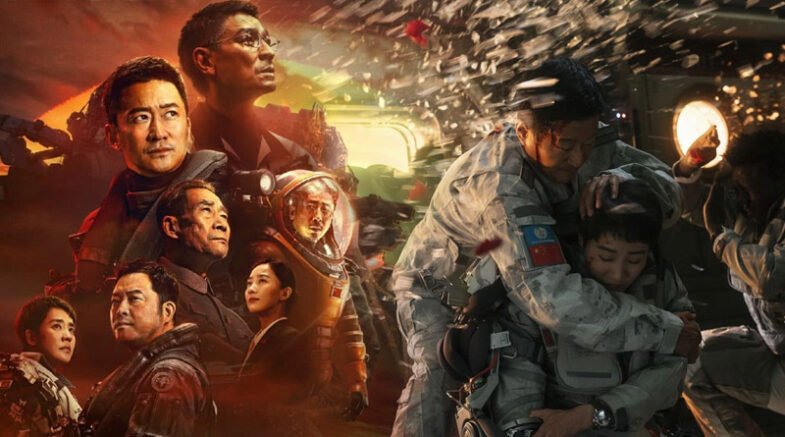More than 950,000 props and costume pieces, 5,310 conceptual design drawings, and more than 4,000 visual effects shots were used.

The sci-fi blockbuster “The Wandering Earth II” from China has been in theatres for more than 50 days and sparked lively debate on social media platforms, bringing attention to the technologies and stories that went into making the film.
Prequel to the 2019 sci-fi blockbuster “The Wandering Earth,” “The Wandering Earth II” tells the tale of humanity building massive engines to move Earth to a new solar system as the sun burns out quickly. Andy Lau and Li Xuejian star.
With views of related topics reaching 250 million since its release on Jan. 22, the Chinese sci-fi adventure film continues to be one of the most popular trending topics on Sina Weibo, China’s version of Twitter.
One Sina Weibo user said, Sci-fi blockbuster “The Wandering Earth II exceeded my expectations. “It shows the infinite charm of sci-fi movies and conceptions to the fullest with its imagination and stunning visual effects.” The film used many more scenes and props than “The Wandering Earth,” according to Gao Ang, the art director of “The Wandering Earth II.”
Gao explained the team’s goal in producing the film: “We hope to complete the task of ‘depicting the future world’ in the framework of a “historical documentary” through greater information density. More than 1,400 days were spent on planning, filming, and editing.
More than 950,000 props and costume pieces, 5,310 conceptual design drawings, and more than 4,000 visual effects shots were used.
After watching the film, some viewers expressed their admiration for the technological and scientific elements, such as the quantum computers and space elevators. They did, however, claim that occasionally they confused visual effects with sci-tech props.
One of the companies that supplied the movie’s props was the Xuzhou Construction Machinery Group Co., Ltd. (XCMG), a well-known producer of heavy equipment in China. The filming is a process that the directors envision and the people from XCMG carry out, according to Feng Ruoyu, director of the company’s “The Wandering Earth II” project.
According to Feng, the XCMG has donated more than 400 sets of parts as well as 61 sets of equipment, including the ET120 walking excavator, to help with the filming.
The series director Guo said, “When we see the equipment, we think our imagination cannot keep up with reality. There are already such technologies in use in the real world, which is why we are so confident in producing science fiction movies.
He claimed that since people frequently see news reports on extraterrestrial Chinese astronauts and probes landing on the moon, they can be persuaded by the futuristic imagery in sci-fi films. Guo continued, “Economic development has provided a sizeable cultural consumption market for sci-fi creation, while scientific and technological progress has provided a realistic basis for sci-fi literature and art.
The China Science Fiction Research Center in Beijing and the Research Center for Science and Human Imagination under the Southern University of Science and Technology in the Guangdong Province of south China jointly developed the 2022 China Sci-Fi Industry Report, which was released in February.
The report claims that in 2021, the sci-fi industry in China generated total revenues of 82.96 billion yuan (roughly 12 billion dollars), an increase of 50.5 percent from the previous year and a continuation of steady growth.
The introduction and implementation of policies and awards specifically related to science fiction, as well as the release of numerous films and videos, according to university professor Wu Yan, have created opportunities and instilled confidence in the development of China’s science fiction industry.
According to box office monitor Maoyan, “The Wandering Earth II” has made over 4 billion yuan at the box office. Additionally, it has been made available in 23 nations and areas, including the US, Canada, Singapore, and Malaysia. It will subsequently be made available in the Republic of Korea, Uzbekistan, and Russia.
Ji Shaoting, head of the Future Affairs Administration, and Liu Cixin, China’s famous sci-fi writer and Hugo Award winner, praised the creators of The Wandering Earth II for their courage and innovative spirit. Liu added that there is still a long way to go for China’s science fiction, but there is a group of people who will never stop pushing forward.
